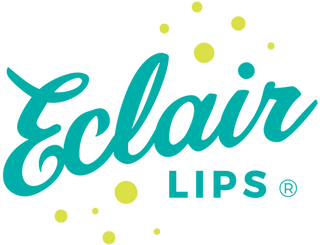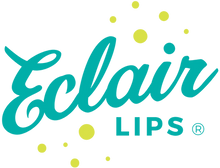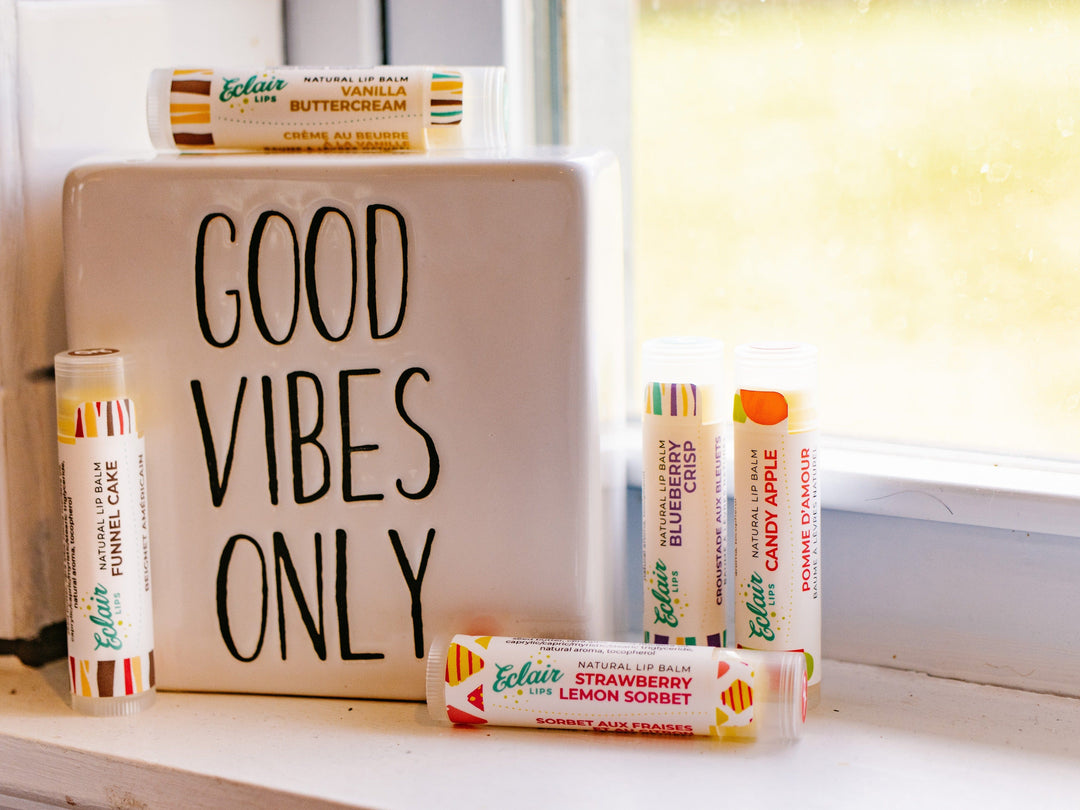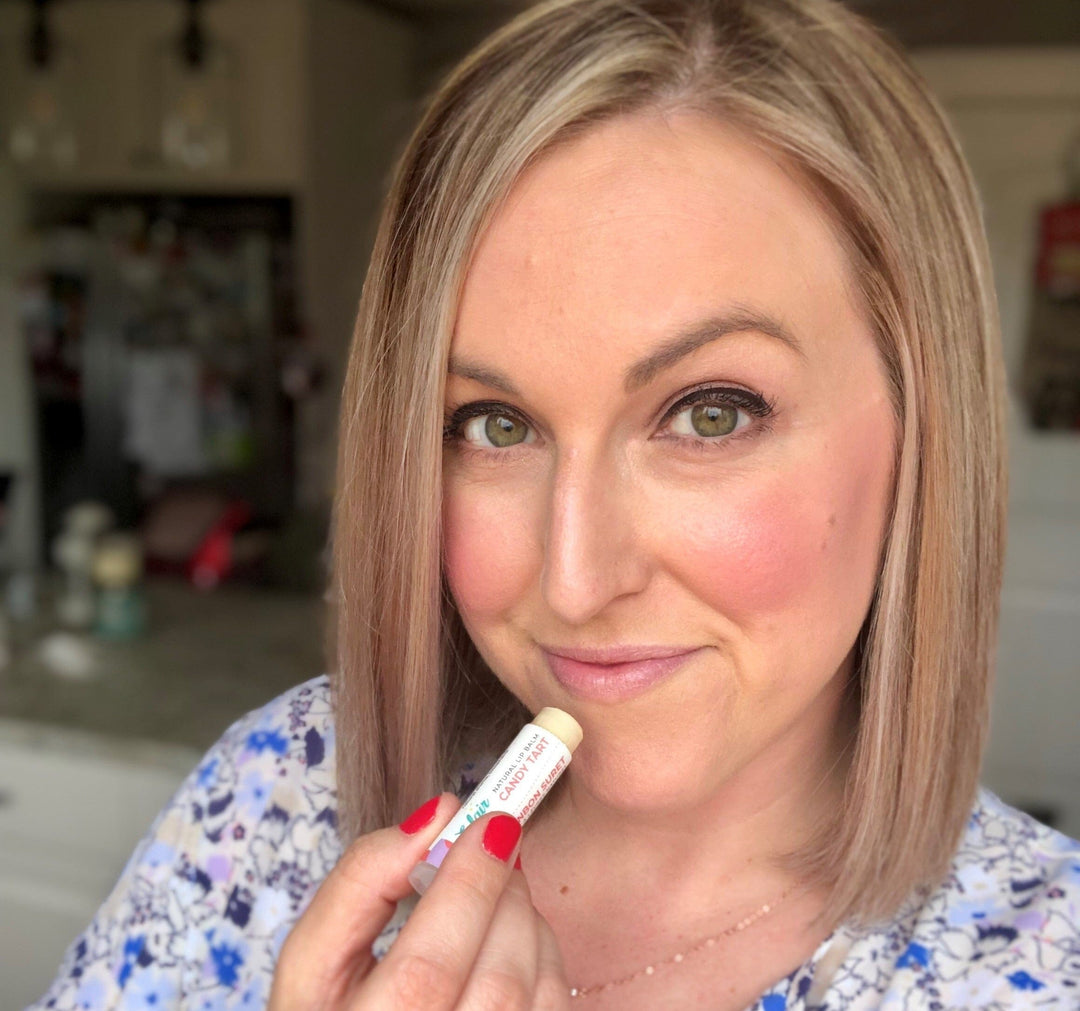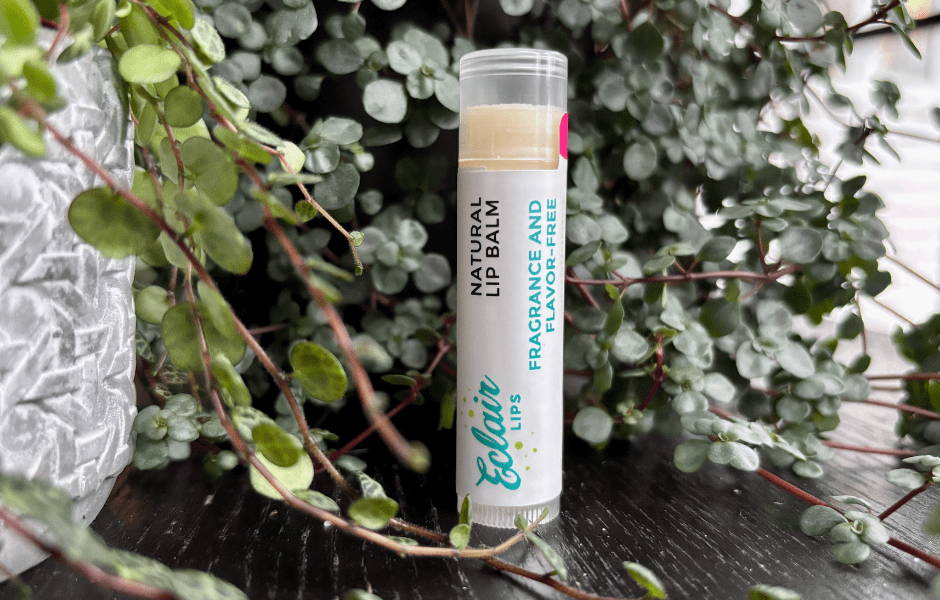Best Ingredients for Lip Balm: What Actually Works
The Real Story Behind Lip Balm That Delivers

The best ingredients for lip balm aren't necessarily the most exotic or expensive ones; they're the ones that actually work together to keep your lips soft and comfortable.
If you've ever stood in the drugstore aisle staring at twenty different tubes, wondering what makes one better than another, you're not alone. One promises fifteen miracle ingredients, another keeps it simple with three. The real question isn't which has the fanciest label, but which formula actually does what it claims.
Quick Takeaway
- Waxes like beeswax provide structure and staying power on your lips
- Butters like cocoa butter add protection and that rich, cushiony feel
- Oils like coconut oil bring instant comfort and smooth glide
- The ratio matters more than any single ingredient
- Simple formulas with quality ingredients often outperform complex ones
Contents
Why Lip Balm Ingredients Actually Matter
You might think all lip balms do the same basic job, and in theory you're right. Waxy stick, keeps lips from cracking, smells nice. But if you've ever bought a balm that felt greasy five minutes later, or one that wore off before you finished your morning coffee, or one that somehow made your lips feel drier, you know there's more to it.
Understanding ingredients helps you make better choices. When you know what cocoa butter does versus what coconut oil does, or why beeswax shows up in almost every formula, you can look at a label and predict how that balm will feel on your lips.
You can skip the ones that won't work for you and find the ones that will, without wasting money on tubes that end up in your junk drawer.
The thing about a good balm is that it's all about balance. It's not one star ingredient doing all the work, it's three different types of ingredients working as a team. Oils sink in and soften your lips. Butters add richness and help lock in moisture. Waxes give the balm structure and staying power so it actually protects your lips long enough to matter.
When these three elements are in balance, you get a balm that glides on smoothly, feels comfortable, and lasts through your commute to work.
When the balance is off, you notice right away. Too much wax and the balm feels stiff or draggy when you apply it. Too much oil and it slides right off your lips or melts in your pocket on a warm day.
Too much butter without enough wax and it disappears within minutes, leaving you reaching for the tube again. The best ingredients for lip balm are not about picking one hero component, they're about understanding how everything works together.
At Eclair Lips, we've spent years tweaking our formulas to get that balance right. We want our balms to feel smooth when you apply them, cushiony and protective on your lips, and present long enough to actually do their job.
That means carefully choosing how much cocoa butter, coconut oil, and beeswax goes into every batch. It also means skipping ingredients that sound impressive but don't actually pull their weight in the formula.
The Core Trinity: Oils, Butters, and Waxes
Let's talk about the three building blocks of almost every lip balm you'll ever use. These are the ingredients that make or break a formula, and understanding what each one does is your key to reading labels like a pro.

Oils are your quick comfort layer. They sink into your lip skin fast, softening dry patches and making the balm spread easily. Coconut oil, for example, melts right at skin temperature, so it feels silky and light the second it touches your lips.
Sweet almond oil and avocado oil are also popular choices because they bring nourishment and a soft, emollient feel. The downside of oils on their own is that they don't stick around long. Without something to anchor them, they absorb or rub off quickly, which is why you need the other two elements.
Butters are your nourishment and cushion. Cocoa butter and shea butter are the two you'll see most often in lip balms, and for good reason. They're solid at room temperature but melt against your lips, creating a rich, creamy layer that feels satisfying and protective.
Dermatological research shows that butters help trap moisture and add that plush, cushiony feel that makes a balm feel luxurious instead of thin. But like oils, butters need help. On their own, they can feel heavy or melt off too quickly in warm weather, which is where waxes come in.
Waxes are your protection and structure. Beeswax is the classic choice because it gives a balm its solid form and helps it cling to your lips. It creates a barrier that slows down moisture loss and keeps wind and cold from drying you out.
Plant waxes like candelilla and carnauba do similar jobs, though they can feel firmer or less sticky than beeswax. Waxes are what make a balm last. Too much wax and you'll notice drag or a waxy film that doesn't feel great, but the right amount is what keeps you from reapplying every twenty minutes.
At Eclair Lips, we balance these three elements carefully in every formula we make. Our balms start with cocoa butter for that creamy, protective base. We add coconut oil for smooth glide and quick comfort. Then we use beeswax to hold everything together and make sure the balm stays put long enough to actually protect your lips.
The result is a balm that feels smooth, lasts through your morning routine, and keeps your lips comfortable without constant reapplication.
This balance is what separates a good balm from a mediocre one. The best ingredients for lip balm are not just high-quality oils or expensive butters, they're ingredients that know their role and play it well.
Champion Ingredients That Prove Their Worth
Not all ingredients are created equal, and some just do the job better than others. These are the champion ingredients that show up in the best lip balms because they deliver real results without fuss.
Cocoa butter is the backbone of a protective balm. Research on skin function shows that cocoa butter is occlusive, meaning it forms a protective layer on your lips that locks in moisture and shields against wind and dry air.
It's firm at room temperature, so it gives structure without feeling stiff. It melts slowly against your lips, releasing a rich, creamy feel that lasts. In its crude form, cocoa butter smells like chocolate, which is why dessert-flavoured balms often use it. If you want a neutral base, deodorised cocoa butter works just as well without the scent.
Coconut oil is your instant comfort ingredient. It melts at about 24 degrees Celsius, so it softens the moment it touches your lips. It adds glide, making a balm spread easily without tugging. Coconut oil is lightweight and absorbs quickly, which is great for everyday hydration.
The downside is that it's soft, if a balm has too much coconut oil, it can turn mushy in warm weather or melt in your pocket. Used in balance with waxes and butters, though, it's one of the best ingredients for lip balm.
Beeswax is what makes a balm last. It's naturally water-resistant, so it stays on your lips through talking, drinking, and even light eating. According to formulation research, beeswax has a melting point around 62 to 65 degrees Celsius, which means it stays solid at room temperature but softens nicely when applied.
It also has a mild, natural scent that most people find pleasant. Some people prefer plant-based waxes like candelilla for vegan reasons, and those work well too, but beeswax is still the gold standard for staying power.

Natural vitamin E, or tocopherol, is the unsung hero. It's not there to moisturise your lips, it's there to keep the oils and butters fresh. Studies on ingredient stability show that oils can go rancid over time, especially unsaturated ones like coconut or almond oil.
Vitamin E is an antioxidant that slows down that process, extending the shelf life of the balm and keeping it smelling and feeling pleasant. It also has some skin benefits, but its main job is preservation, and it does that job beautifully.
This combination works because each ingredient has a specific role. Cocoa butter protects and nourishes. Coconut oil softens and adds glide. Beeswax holds everything in place. Vitamin E keeps it all fresh.
When these four work together in a balanced formula, you get a balm that feels good, lasts long, and doesn't go rancid in your drawer.
Clearing Up Common Ingredient Myths
There are a lot of myths floating around about lip balm ingredients, and they can make shopping more confusing than it needs to be. Let's clear up a few of the biggest ones.
Myth: More ingredients equal a better balm. You've probably seen balms with ingredient lists that scroll for days, packed with exotic oils, botanical extracts, and vitamins. It looks impressive, but more is not always better.
In fact, a long ingredient list can be a red flag. Every ingredient adds a potential irritant or allergen. If your lips are sensitive, a balm with fifteen ingredients is fifteen chances for something to go wrong. The best balms keep it simple with a handful of high-quality ingredients that work well together.
Myth: Exotic ingredients are more effective. Marketing loves to tout rare oils from distant corners of the world, argan oil from Morocco, marula oil from Africa, sea buckthorn from the Himalayas.
These can be lovely ingredients, but they're not inherently better than coconut oil or cocoa butter. What matters is how the ingredient performs in the formula, not how far it travelled to get there. A balm with argan oil might feel great, or it might just be a more expensive version of something that almond oil could do just as well.
Myth: Natural is always better than synthetic. This one gets repeated a lot in beauty circles, and it's just not true. Natural ingredients can be wonderful, but they can also be irritating. Essential oils are natural, but peppermint oil can sting cracked lips.
Lanolin is natural, but research on contact allergens shows it's a common allergen. On the flip side, some synthetic ingredients are gentle and effective. Dimethicone, for example, is a synthetic that creates a smooth, protective layer without irritating most people.
The best ingredients for lip balm are the ones that work for your lips, whether they're natural or synthetic.
The truth is that balance and quality matter more than ingredient count or origin. A simple balm with three high-quality ingredients will outperform a cluttered formula with twenty mediocre ones every time.
Simple Formulas vs Complex Formulas: What You Need to Know
Not all lip balms are built the same way, and one of the biggest differences is how many ingredients they pack in. Here's how simple formulas stack up against complex ones, and what you should know about each approach.
Simple formulas typically have five to ten ingredients. They focus on the essentials: a butter or two, an oil, a wax, maybe vitamin E and a flavour. These balms are easier to use if you have sensitive skin or allergies because there are fewer potential irritants.
They're also easier to understand, you can look at the label and know exactly what you're putting on your lips. The downside is that simple formulas might not offer extras like tint, shimmer, or SPF. But if your main goal is soft, protected lips, simple formulas often do the job beautifully.

Complex formulas can have fifteen, twenty, or even thirty ingredients. They might include multiple oils, several butters, botanical extracts, vitamins, and specialty ingredients like peptides or ceramides. These balms are often marketed as multi-tasking or high-performance products.
The upside is that you might get added benefits like anti-aging claims or extra nourishment. The downside is that more ingredients mean more chances for something to irritate your lips. If you have sensitive skin, complex formulas can be a gamble.
Natural versus synthetic ingredients is another angle worth considering. Natural ingredients like cocoa butter, coconut oil, and beeswax are straightforward and work well for most people. They've been used in skincare for generations, and they deliver reliable results.
Synthetic ingredients like dimethicone or synthetic waxes can also be effective, and they're often more stable or easier to formulate with. The best ingredients for lip balm are not about being natural or synthetic, they're about being safe, effective, and well-balanced.
Here's a quick comparison of how different formula types stack up:
| Formula Type | Ingredient Count | Best For | Considerations |
|---|---|---|---|
| Simple Natural | 5-10 ingredients | Sensitive lips, straightforward care | May lack extras like tint or SPF |
| Complex Natural | 15-30 ingredients | Those seeking multi-benefit formulas | More potential allergens |
| Synthetic-Friendly | Varies | Specific needs like long wear or high gloss | Some prefer natural alternatives |
| Balanced Hybrid | 8-12 ingredients | Most users, everyday protection | Sweet spot of benefits and simplicity |
At Eclair Lips, we lean toward simple formulas with high-quality natural ingredients. Our balms typically have fewer than ten ingredients, and we focus on the ones that deliver real results: cocoa butter, coconut oil, beeswax, natural flavours, and vitamin E.
We skip the extras that don't pull their weight, and we focus on balance and texture instead. You can experience this approach with our gentle exfoliating balms that keep things simple while adding just enough sugar for a satisfying scrub.
Using Your Ingredient Knowledge in Real Life
Knowing about lip balm ingredients is not just for fun, it actually helps in real-world situations. Here are a few places where understanding ingredients makes a practical difference.
Reading labels in the store gets easier once you know what to look for. Check the first few ingredients, those are the ones present in the highest amounts. If you see waxes high up, expect a firmer, longer-lasting balm. If you see oils first, expect something softer and more cushiony. If you see butters near the top, expect creaminess.
Avoid balms with menthol, camphor, or strong essential oils if your lips are already cracked, those ingredients can sting. Look for simple formulas with ingredients you recognise if you have sensitive skin.
DIY balm making is a popular hobby, and ingredient knowledge is crucial here. A common mistake is using too much oil, which makes the balm too soft, or too much wax, which makes it stiff and draggy.
According to formulation guidelines, a good starting ratio is about 1 part wax to 2 parts butter to 1 part oil. That gives you a balm that's solid in the tube but melts nicely on your lips. Adding vitamin E helps keep the oils fresh, and using food-grade flavours makes it pleasant to use. But DIY balms can be tricky, you need to measure carefully and store them properly to avoid spoilage.

Understanding marketing claims is another place where ingredient knowledge helps. If a balm says it's "all-natural," check the label to make sure. If it claims to be "healing," remember that's a drug claim in Canada and should not be used for cosmetics according to Canadian regulations.
If it says it has "natural SPF," be sceptical, oils like coconut or raspberry seed oil do not provide reliable sun protection. The best ingredients for lip balm are not the ones with the flashiest marketing, they're the ones that work.
Seasonal ingredient needs also matter. In winter, you want a balm with lots of wax and butter for protection against cold and wind. In summer, you might prefer something lighter with more oil, so it doesn't feel heavy or melt in your pocket.
If you're outdoors a lot, you might want a balm with SPF, though remember that needs to be a tested, regulated product, not just oils claiming "natural SPF." Understanding ingredients helps you pick the right balm for the season.
What Science Tells Us About Effective Formulas
Cosmetic chemistry and dermatological research give us a solid foundation for understanding what makes a good lip balm. These principles are not just marketing talk, they're backed by evidence and real-world testing.
Occlusive versus emollient ingredients is a key concept. Occlusives form a barrier on the surface of your lips to prevent moisture loss. Examples include petrolatum, beeswax, and cocoa butter. They're the ingredients that make a balm protective and long-lasting.
Emollients, on the other hand, soften and smooth the skin by filling in cracks and gaps. Examples include oils like coconut, almond, and avocado. Research on lip care shows that the best balms use both occlusives and emollients together. The emollients soften and nourish, while the occlusives lock in that moisture and protect against the elements.
Dermatological research shows that effective lip care is about maintaining the skin barrier. According to dermatology guidelines, lips have no oil glands, so they rely on external moisture and protection. A good balm provides both. It adds moisture through emollients and locks it in with occlusives.
Research also shows that simpler formulas with fewer ingredients tend to cause fewer reactions, which is why dermatologists often recommend fragrance-free, dye-free balms for people with sensitive lips.
Studies on ingredient stability matter too. Oils can go rancid over time, especially unsaturated ones like sunflower or almond oil. Adding an antioxidant like vitamin E helps slow that process, keeping the balm fresh longer. Waxes and butters are more stable, they don't spoil as quickly.
This is why the best ingredients for lip balm often include vitamin E as a preservative, even if it's not there for its skin benefits.
Dermatological perspectives on formulation emphasise balance and gentleness. A balm should not sting, tingle, or irritate. It should feel soothing and comfortable. Ingredients like menthol or camphor, while popular, are often discouraged by dermatological research because they can irritate cracked lips.
Simple, gentle formulas with proven ingredients like cocoa butter, coconut oil, and beeswax are the ones most aligned with evidence-based care.
At Eclair Lips, we follow these principles. We focus on balance, gentleness, and quality. We use ingredients that are backed by both science and experience, and we skip the ones that sound good but don't deliver results.
Exploring Your Options: Butters, Oils, and Waxes
Not everyone wants the same thing in a lip balm, and that's where understanding your options comes in handy. Here's a breakdown of different butter bases, oil types, and wax options so you can understand what's out there.
Butter bases comparison starts with cocoa butter and shea butter, the two most common. Cocoa butter is firmer and more protective, it creates a solid, long-lasting barrier. It has a natural chocolate scent in its crude form or can be deodorised for a neutral base.
Shea butter is softer and creamier, it feels luxurious and melts quickly on your lips. It has a mild, nutty scent that some people love and others find off-putting. Mango butter is another option, it's lighter than shea and has a neutral scent, making it a good middle ground. Each butter brings something different to the formula, so the best choice depends on your preferences.
Oil types and benefits vary widely. Coconut oil is quick-melting and lightweight, great for everyday comfort. Almond oil is gentle and nourishing, often used in sensitive-skin formulas. Avocado oil is rich and cushiony, perfect for very dry lips.
Jojoba oil mimics your skin's natural oils, so it sinks in easily and feels silky. Castor oil is thick and glossy, often used in tinted balms to add shine. Each oil has its own feel and benefits, and the best oil for you depends on what you're looking for.

Wax options include beeswax, candelilla wax, and carnauba wax. Beeswax is the classic choice, it gives staying power and a natural, honey-like scent. Candelilla wax is plant-based and vegan, it's a bit firmer than beeswax and adds a glossy finish.
Carnauba wax is very hard with a high melting point, making it ideal for balms that need to hold up in hot weather. Each wax brings different properties, so the best wax depends on your formula goals.
Preservative choices matter more than you might think. If your balm is oil-based with no water, you usually don't need a preservative, just an antioxidant like vitamin E to keep the oils fresh.
But if your balm includes water-based ingredients like aloe or honey, you need a preservative to prevent mould and bacteria growth. Common preservatives include phenoxyethanol or potassium sorbate, both of which are considered safe and effective. The best choice depends on your formula and your comfort level with synthetic versus natural ingredients.
Understanding these alternatives helps you make informed choices, whether you're buying a balm or making your own. The best ingredients for lip balm are the ones that fit your needs, your values, and your preferences.
Common Questions About Lip Balm Ingredients
What is the most important ingredient in lip balm?
There's no single "most important" ingredient, it's all about balance. Waxes like beeswax provide structure and staying power. Butters like cocoa butter add protection and nourishment. Oils like coconut oil bring glide and quick moisture. The best balms use all three in harmony, so no single ingredient carries all the weight.
Are natural ingredients better than synthetic?
Not always. Natural ingredients like cocoa butter and coconut oil work beautifully, but so do some synthetic ingredients like dimethicone. What matters is safety, effectiveness, and how the ingredient performs in the formula. Natural doesn't automatically mean better, and synthetic doesn't automatically mean harmful. The best ingredients for lip balm are the ones that work for your lips.
How do I read a lip balm label?
Look at the first few ingredients, those are present in the highest amounts. If you see waxes first, expect a firmer balm. If oils are listed first, expect something softer. Avoid ingredients like menthol or camphor if your lips are cracked, and stick with simple formulas if you have sensitive skin.
What ingredients should I avoid?
Avoid menthol, camphor, and strong essential oils if your lips are already dry or cracked, as these can sting. Also watch for potential allergens like lanolin, coconut, or soy if you have known sensitivities.
Research on contact allergens shows that fragrance and flavour can also irritate sensitive lips, so fragrance-free options are safest for some people.
Do more ingredients make a balm more effective?
No. More ingredients just mean more chances for irritation or allergic reaction. The best balms keep it simple with a handful of high-quality ingredients that work well together. Balance and quality matter more than ingredient count.
Can I make my own lip balm at home?
Yes, but it takes practice to get the ratios right. A good starting point is 1 part wax to 2 parts butter to 1 part oil. Add vitamin E to keep it fresh and use food-grade flavours if you want scent. But DIY balms can be tricky, so store-bought balms from reputable brands often have better balance and texture.
What's the difference between an occlusive and an emollient?
Occlusives form a barrier on your lips to prevent moisture loss, examples include beeswax and cocoa butter. Emollients soften and smooth the skin by filling in cracks, examples include coconut oil and almond oil. According to dermatology guidelines, the best balms use both types of ingredients working together.
Is vitamin E in lip balm good for my lips?
Vitamin E has some skin benefits, but its main job in lip balm is preservation. It's an antioxidant that keeps oils from going rancid, extending the shelf life of the balm. It's a behind-the-scenes hero that makes sure your balm stays fresh and pleasant to use.

The Bottom Line on Lip Balm Ingredients
The best ingredients for lip balm are not the ones with the most exotic names or the longest list. They're the ones that work together in balance: waxes for staying power, butters for nourishment, and oils for glide.
Understanding this simple truth helps you read labels, make better choices, and find a balm that actually keeps your lips soft and comfortable without needing to reapply every twenty minutes.
At Eclair Lips, we've built our formulas on this foundation, simple, high-quality ingredients working together in careful balance. No unnecessary extras, no marketing fluff, just effective lip care that feels good and lasts. Because when it comes down to it, the best lip balm is the one that lets you forget you're wearing it while your lips stay comfortable all day long.
More Lip Balm Guides
- How to choose natural lip balm for your needs
- Dermatologist recommendations for lip care
- What keeps lips hydrated all day long
- Lip care during Accutane treatment
- Managing angular cheilitis with lip balm
- Essential oils in lip balm: what to consider
- How to choose drugstore lip balm
- Lip balm options for men
- Finding the best lip balm for your specific needs
- Choosing unscented lip balm options
Explore Our Online Lip Balm Shop
At Eclair Lips, we believe the best lip balm is the one you love to use every day. Every balm is handmade in small batches with natural ingredients, playful dessert-inspired flavours, and a texture we obsessed over until it felt just right. We ship anywhere in Canada and the US, so whether you are in Toronto, Halifax, Las Vegas, or Chicago, you can stock up on your favourite lip balm Canada style, right from your couch.
In our shop, you will find tinted lip balm for a hint of colour, fragrance free balm if your lips are on the sensitive side, gentle lip scrubs to keep everything smooth, and even lip balm for kids when you want something safe and fun to share. Looking for variety? Try a lip balm set to explore new flavoured lip balm favourites or to give as a gift.
Our brand is built on honesty, humour, and heart, and that means no scare tactics, no overblown claims, just lip care that feels good and makes you smile.
Take a peek at our collections here: https://eclairlips.com.
Disclaimer: The information in this post is meant to be helpful, and while we love dorking out about lip balm, it isn't medical advice. Everyone's needs are different, so if you have concerns about allergies, sensitivities, pregnancy, or a medical condition, please check with a healthcare professional before trying new products.
